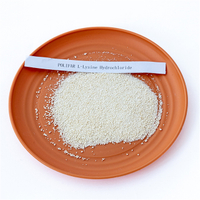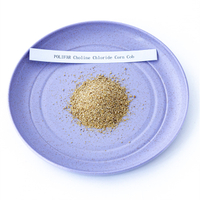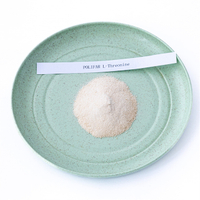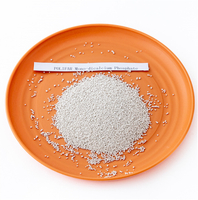Views: 0 Author: Site Editor Publish Time: 2022-11-24 Origin: Site









1. Overview of Vitamin B1
Vitamin B1, also known as thiamine (C12H17N4OS, CASRN: 59-43-8), is a B vitamin composed of a pyrimidine ring and a thiazole ring, and is one of the earliest discovered vitamins. Vitamin B1 is a colorless crystal or crystalline powder. It has a faint special odor, bitter taste, and is hygroscopic. It is easy to absorb water when it is exposed in the air. Vitamin B1 mainly exists in the outer skin and germ of seeds, such as rice bran and bran. It is also very rich in yeast, lean meat, cabbage and celery.
Vitamin B1 is absorbed in the upper small intestine, and the absorbed vitamin B1 is phosphorylated in the liver. The phosphorylated forms include thiamine-phosphate (TMP), thiamine pyrophosphate (TPP), and thiamine triphosphate (TTP) . Free vitamin B1 and its phosphorylated form exist in different amounts in animal tissues. TPP is the most abundant, accounting for about 80% of the total vitamin B1, TTP accounts for 5% to 10%, and the rest is free vitamin B1 and TMP. In animals, these four forms of vitamin B1 can be transformed into each other through the action of various enzyme systems.
2. Physiological functions of vitamin B1
2.1 Participate in nutrient metabolism
Vitamin B1 is a water-soluble vitamin essential for maintaining animal growth. It is mainly involved in the metabolism of sugar and some amino acids in the body. After specific enzyme catalysis, it can interact with ATP to generate thiamine pyrophosphate (TPP). TPP is an important coenzyme in glucose metabolism. Therefore, when vitamin B1 is deficient, glucose metabolism will be hindered. On the one hand, it will lead to insufficient energy supply of nerve tissue. Its deficiency manifests as multiple neuroinflammation, which will easily cause changes in the properties of heart organs and heart function. On the other hand, if the glucose metabolism in the body is disturbed, pyruvic acid and lactic acid will be produced during the glucose metabolism in the blood and tissues, and the accumulation of the two in the blood, urine and tissues will cause acidosis.
Sugar metabolism can affect lipid metabolism. If vitamin B1 is deficient and lipid synthesis decreases, the integrity of myelin sheath cannot be well maintained, which will lead to neurological lesions and multiple neuritis. Vitamin B1 deficiency can also lead to disorders of cholesterol synthesis due to reduced activity of its key regulatory enzyme, 3-hydroxy-3-methylglutaryl-CoA reductase. Cholesterol is also one of the main components of cell membranes, and its synthesis disorder will affect the integrity of nerve cell membranes.
2.2 Other physiological functions
Lack of vitamin B1 will reduce the content of vitamin B1 in the brain, thereby affecting brain function. Studies have also found that vitamin B1 has a direct neurochemical activity on the central nervous system, and can interact with Ca2+ and Mg2+ to regulate the release of neurotransmitters from the presynaptic membrane. The relationship between vitamin B1 and heart function is also very close. Experiments have shown that in short-term lack of vitamin B1 animals, the tension and elasticity of the myocardium are greatly reduced, and the arrhythmia can be restored after supplementing vitamin B1. However, if there is a long-term lack of vitamin B1, the heart will be seriously damaged and eventually lead to death.
3. Application of vitamin B1 in animal production
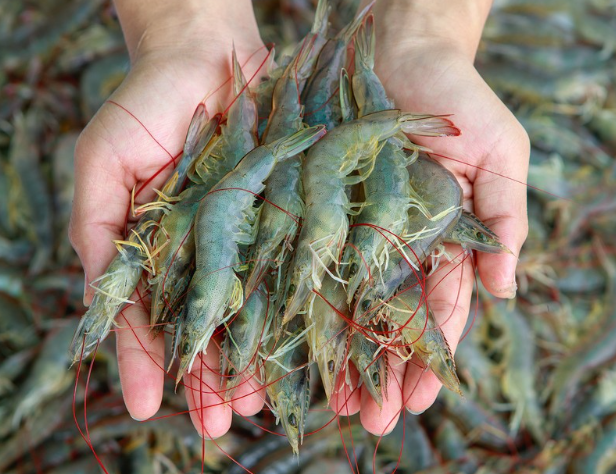 Aquaculture
Aquaculture 
Poultry Farming

Ruminant Animal
3.1 Application of Vitamin B1 in Aquaculture
Because vitamin B1 has a wide range of functions in aquatic animals, the long-term shortage of vitamin B1 not only affects their growth, but also causes a series of deficiencies through metabolic reaction disorders in the body. Studies have found that crustaceans such as shrimps and crabs cannot synthesize vitamin B1 or the amount of vitamin B1 is very small, which is difficult to meet their own physiological needs, so they must be obtained through artificial feeding.
3.2 Application of vitamin B1 in poultry farming
Vitamin B1 also plays an important role in the growth of poultry. The study found that adding thiamine higher than 1.0 mg/kg in the diet significantly increased the body weight of 3-week-old and 4-7-week-old broilers (P<0.01). The requirements of broiler chickens aged 0~3 weeks and 4~7 weeks were 4.0mg/kg and 1.6mg/kg respectively. Therefore, it can be explained that vitamin B1 is essential in poultry feed formula.
3.3 Application of vitamin B1 in ruminants
Vitamin B1 has special nutritional effects on ruminants. Studies have found that during the peak lactation period, dairy cows are prone to not eating concentrate, which leads to a decrease in milk production. It can be injected intramuscularly with 0.25% vitamin B130mL. For mild cases, the food will start to eat on the second day after injection, and for severe cases, it will return to normal after 2-3 times of medication. It was also found that Wernicke's encephalopathy was caused by thiamine deficiency due to prolonged fasting. It is mainly treated with vitamin B1. If the diagnosis is timely, most patients can recover after treatment. In addition, vitamin B1 is a specific drug in the treatment of bovine ketosis and equine myoglobinuria. It is widely used in organophosphate poisoning, food poisoning and drug poisoning.
4. Summary
Vitamin B1 is usually added in the form of multi-dimensional in the feed. When adding, the species and growth stages of the animals should be considered to ensure the best breeding benefits.
Polifar has been committed to animal nutrition research for 20 years and is a professional feed additive supplier. We provide animals with nutrients needed for growth, such as amino acids, vitamins, phosphates, trace elements. In addition, another goal of Polifar is to improve the economic benefits of farming by improving feed utilization. If you want to know which additive is suitable for your needs, please contact us sales@polifar.com.



